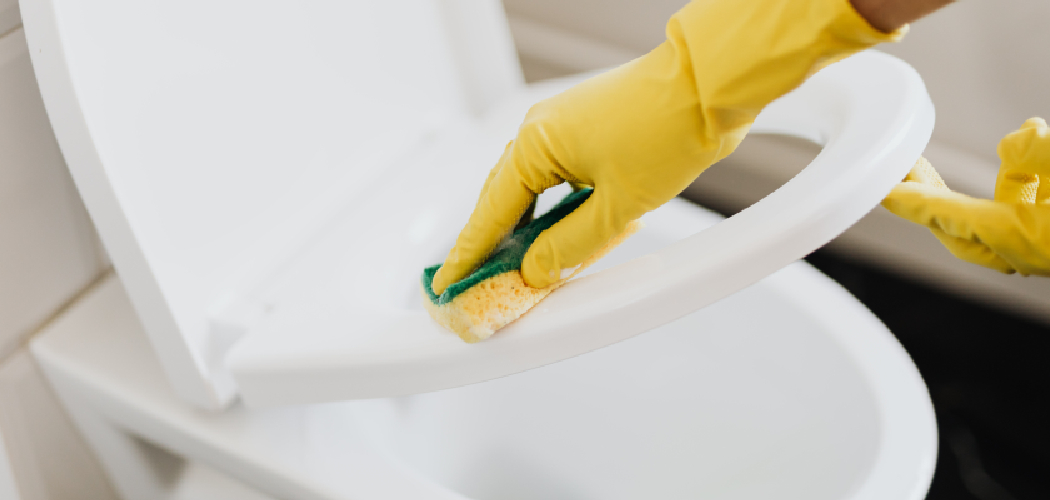Toilet seat hinges are an essential part of your bathroom cleaning routine. They come in contact with a lot of dirt and grime, so keeping them clean is important. Cleaning toilet seat hinges may seem daunting, but it doesn’t have to be! With a few simple steps, you can quickly and easily clean your toilet seat hinges and keep them looking their best.
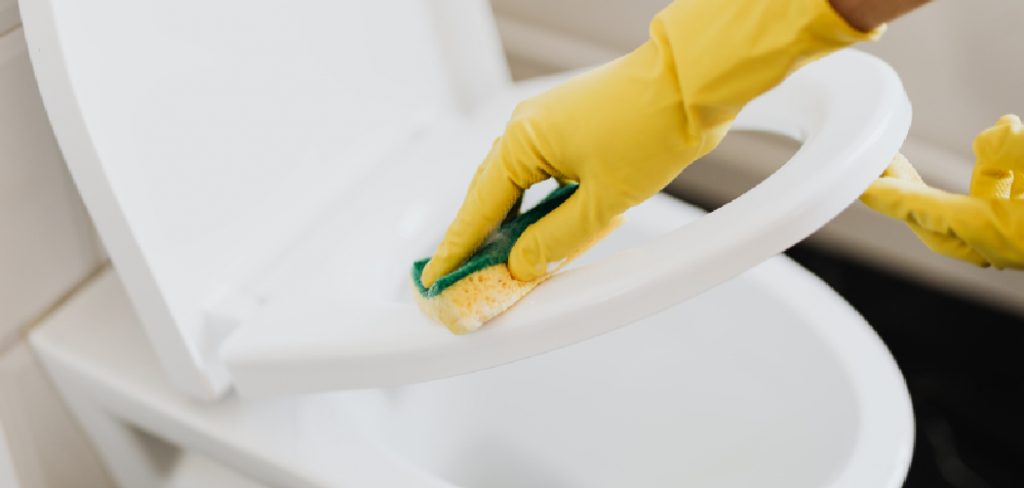
Cleaning toilet seat hinges is an important part of bathroom hygiene that should be addressed. It ensures that your toilet remains sparkling clean and germ-free. Cleaning the hinges also helps to prevent rust from building up, which can cause damage over time. Furthermore, it will help keep the toilet looking new and in good condition. In this blog post, You will learn how to clean toilet seat hinges.
Step-by-Step Processes for How to Clean Toilet Seat Hinges
Step 1: Inspect the Hinges
Start by scrutinizing the hinges. Check for any rust or corrosion, which will require special cleaning methods. Gather supplies such as cloth, soft-bristled brush, white vinegar, and warm water. Use a clean cloth to remove any dirt or debris from the hinges.
Step 2: Remove Any Rust and Corrosion
If you find rust or corrosion on the hinge, use a soft-bristled brush to scrape it off gently. Be sure to use light pressure to avoid damaging the material. Mix equal parts white vinegar and warm water in a bowl. Dip the cloth into the mixture, then wipe down the hinge area. Do this several times to ensure all rust or corrosion is removed.
Step 3: Dry the Hinge Area Thoroughly
After cleaning with vinegar and water, dry the hinge area with a clean cloth. Be sure to use light pressure and wipe in the same direction as the material’s grain. To protect the hinge from future rust, apply a thin layer of wax or oil using a soft cloth. This will help seal out moisture that can cause corrosion.
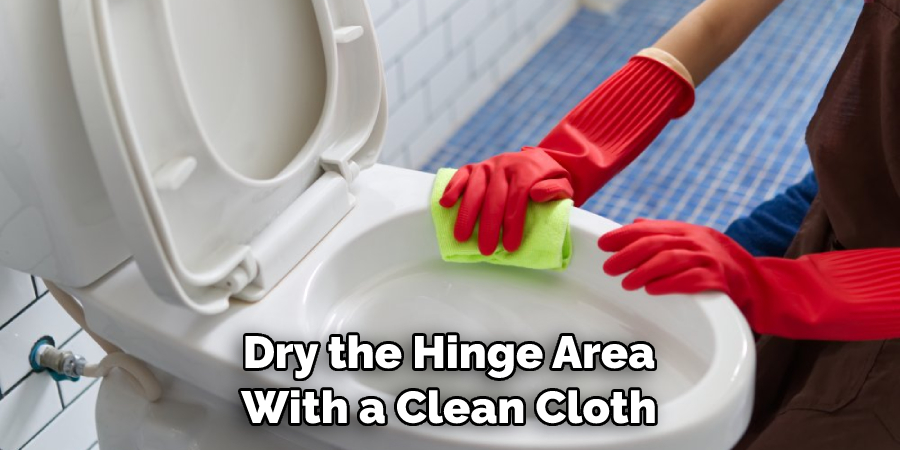
Step 4: Allow the Wax or Oil to Dry Completely
Giving the wax or oil plenty of time to dry completely is important before you reassemble the toilet seat hinges. Once the wax or oil has had time to dry, reassemble the toilet seat hinges. Ensure all parts are securely fastened, and there is no wiggle room between the hinge and the toilet seat.
Step 5: Test the Toilet Seat Hinges
Finally, test the toilet seat hinges to ensure they move freely without sticking or squeaking. If so, you’ve successfully cleaned your toilet seat hinges.
By following these steps, you can help ensure that your toilet seat hinges are properly cleaned and free from rust or corrosion. This will help extend the life of the toilet and keep it looking great for years to come.
Safety Tips for How to Clean Toilet Seat Hinges
- Wear protective gloves and safety goggles while cleaning the hinges to protect yourself from corrosive or toxic materials.
- Check the ingredients of your cleaning products before using them, as some may contain ingredients that can damage the toilet hinge material.
- Cleaning with a wire brush may scratch or damage the hinge material, so use only a soft-bristled brush to scrub away rust or corrosion.
- When mixing vinegar and water, use equal parts of each and do not exceed the recommended amounts.
- Use gentle strokes when wiping down the hinges with a cloth to avoid damaging the material.
- Allow wax or oil to dry completely before reassembling the toilet seat hinges.
- Check the toilet seat hinges regularly for signs of rust or corrosion and clean them when necessary.
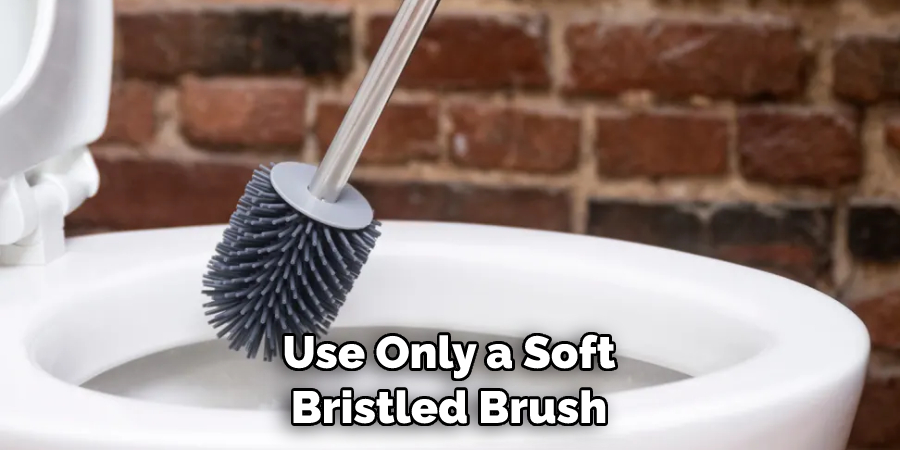
By following these safety tips, you can help ensure your cleaning process is safe and effective. This will also help prevent further damage to your toilet seat hinges and extend their life.
How Do You Prevent Rust on Your Toilet Seat Hinges?
One of the most important steps in caring for your toilet seat hinges is preventing rust from occurring. Rust can occur when metal touches water, and given that your toilet seat hinges are constantly exposed to moisture, it’s important to take extra precautions. Thankfully, there are a few simple steps you can take to help protect against rust:
- Clean your hinges regularly to remove any dirt, debris, and moisture that may have built up on them.
- Apply a thin layer of lubricant, such as WD-40 or silicone grease, to the hinges after cleaning to prevent further rusting.
- Shield your toilet seat hinges using a protective coating like polyurethane or paint.
- Replace old and rusted-out toilet seat hinges with new ones immediately.
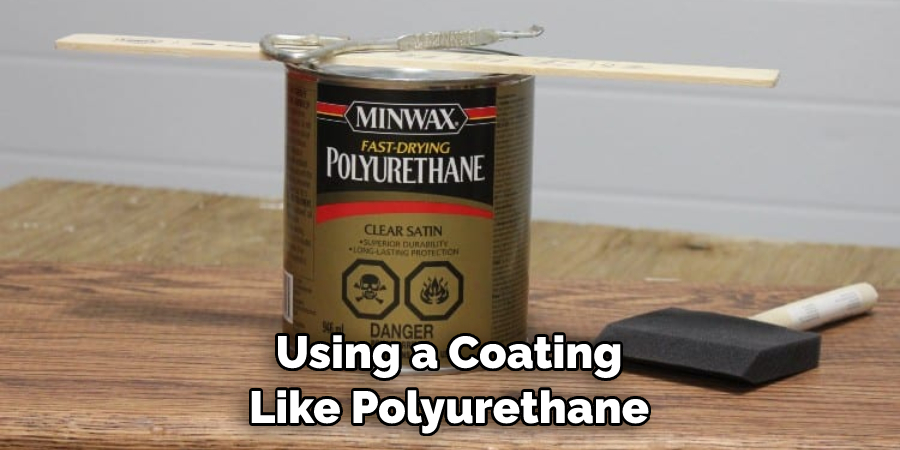
Following these simple steps, you can keep your toilet seat hinges rust-free for years.
How Often Should You Clean Your Toilet Seat Hinges?
Regularly cleaning the hinges of your toilet seat is recommended for optimal hygiene and performance. Depending on how frequently you use your toilet, it’s a good idea to give them a deep clean at least once every quarter. This will ensure that dirt, grime, and bacteria don’t build up over time and cause damage or risk health concerns.
To start cleaning your toilet seat hinges, wipe them down with a damp cloth. This will help to remove any dust and dirt that has accumulated on the surface of the hinges. For tougher stains or heavier grime, you may need a scrubbing brush or sponge with a dedicated cleaner.
Once you have wiped the hinges clean, it’s important to ensure they are thoroughly dry before putting the seat back in place. This will ensure that any moisture does not cause rust or corrosion. Additionally, you might want to use a lubricant such as WD-40 to help keep the hinges functioning smoothly and without sticking.
What is the Best Way to Keep Toilet Seats From Sticking and Squeaking?
If you’re tired of sticking and squeaking toilet seats, keeping them clean and dry is the best option. To do this, you can follow a few simple steps:
- Start by wiping down the toilet seat hinges with a cloth dampened in warm water and soap. This will help remove any moisture or dirt that has built up over time.
- Once the hinges are clean, use a dry cloth to dry them off, and then apply a light coating of WD-40 or oil to the surfaces of each hinge. This will help protect them against corrosion and reduce squeaking noises when you adjust your seat.
- Finally, check the hinges periodically throughout the year to ensure they’re still clean and well-lubricated. This can help prevent any sticking or squeaking issues from developing over time.
Following these simple steps, you can keep your toilet seat hinges clean and dry easily – and avoid any sticking or squeaking problems.
Is It Possible to Lubricate the Hinge on Your Toilet Seat Without Causing Damage?
Yes, lubricating the hinge on your toilet seat can be done without causing any damage. It is important to use a silicone-based lubricant such as WD-40 or CRC Silicone Lubricant, as other types of oil or grease could cause staining and discoloration. Before applying the lubricant to the hinge, clean off any dirt or debris to ensure it will be applied in the right areas.
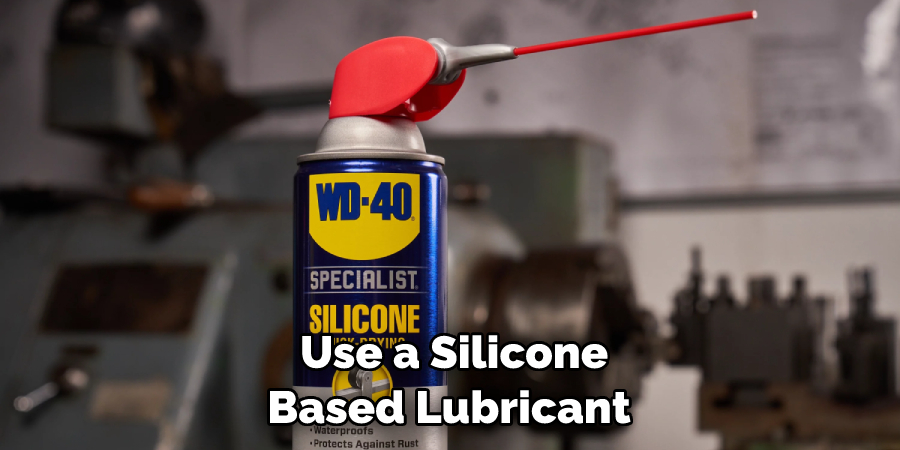
Start by applying a few drops of lubricant along the hinge’s length, then spread it evenly with a soft cloth. Once you have done this, open and close your toilet seat a few times to ensure the lubricant is evenly distributed throughout the area. The result should be smoother operation for your toilet seat.
If the hinges are still sticking or squeaking, you may need to apply additional lubrication. When applying more lubricant, use light pressure and be careful not to get it on any other parts of the toilet seat as this could damage them.
Conclusion
In conclusion, cleaning the hinges of a toilet seat is a simple and important task that should be done regularly to help maintain your bathroom’s hygiene. With the right supplies, it doesn’t take long to complete and can help keep your family safe from any germs lurking in those hard-to-reach areas. You only need a little water, soap or detergent, and a brush or cloth to get the job done.
If you are ever trying to figure out how to care for your toilet seat hinge properly, it’s recommended that you consult with an experienced plumber who can help guide you on the best methods to use and products to buy.
This will ensure that your toilet seat hinge remains in the best condition and helps keep your bathroom clean and safe. This article has been beneficial for learning how to clean toilet seat hinges. Make Sure the preventive measures are followed chronologically.

